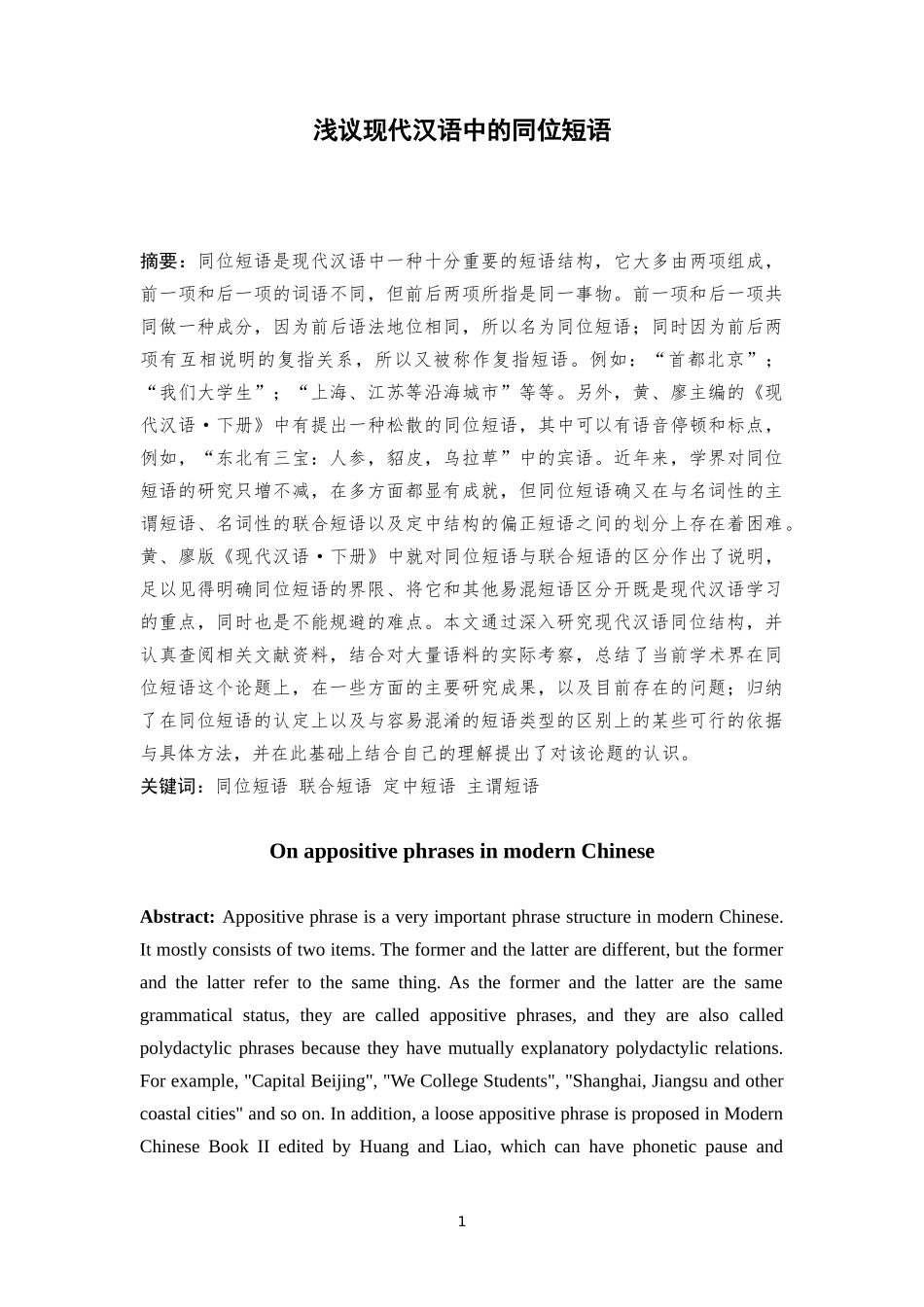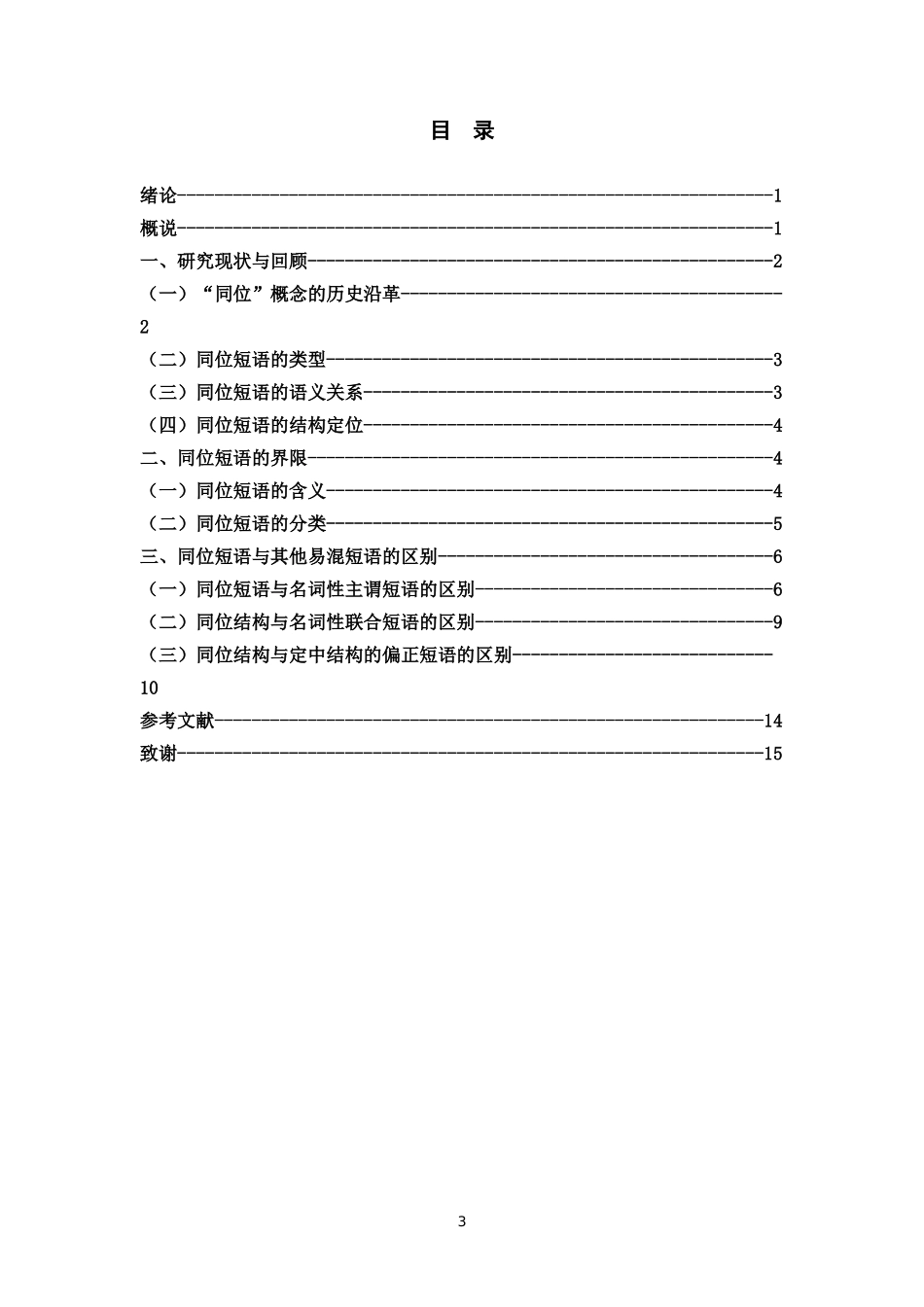浅议现代汉语中的同位短语摘要:同位短语是现代汉语中一种十分重要的短语结构,它大多由两项组成,前一项和后一项的词语不同,但前后两项所指是同一事物。前一项和后一项共同做一种成分,因为前后语法地位相同,所以名为同位短语;同时因为前后两项有互相说明的复指关系,所以又被称作复指短语。例如:“首都北京”;“我们大学生”;“上海、江苏等沿海城市”等等。另外,黄、廖主编的《现代汉语·下册》中有提出一种松散的同位短语,其中可以有语音停顿和标点,例如,“东北有三宝:人参,貂皮,乌拉草”中的宾语。近年来,学界对同位短语的研究只增不减,在多方面都显有成就,但同位短语确又在与名词性的主谓短语、名词性的联合短语以及定中结构的偏正短语之间的划分上存在着困难。黄、廖版《现代汉语·下册》中就对同位短语与联合短语的区分作出了说明,足以见得明确同位短语的界限、将它和其他易混短语区分开既是现代汉语学习的重点,同时也是不能规避的难点。本文通过深入研究现代汉语同位结构,并认真查阅相关文献资料,结合对大量语料的实际考察,总结了当前学术界在同位短语这个论题上,在一些方面的主要研究成果,以及目前存在的问题;归纳了在同位短语的认定上以及与容易混淆的短语类型的区别上的某些可行的依据与具体方法,并在此基础上结合自己的理解提出了对该论题的认识。关键词:同位短语 联合短语 定中短语 主谓短语On appositive phrases in modern ChineseAbstract: Appositive phrase is a very important phrase structure in modern Chinese. It mostly consists of two items. The former and the latter are different, but the former and the latter refer to the same thing. As the former and the latter are the same grammatical status, they are called appositive phrases, and they are also called polydactylic phrases because they have mutually explanatory polydactylic relations. For example, "Capital Beijing", "We College Students", "Shanghai, Jiangsu and other coastal cities" and so on. In addition, a loose appositive phrase is proposed in Modern Chinese Book II edited by Huang and Liao, which can have phonetic pause and 1punctuation. For example,...


